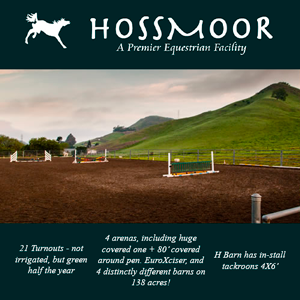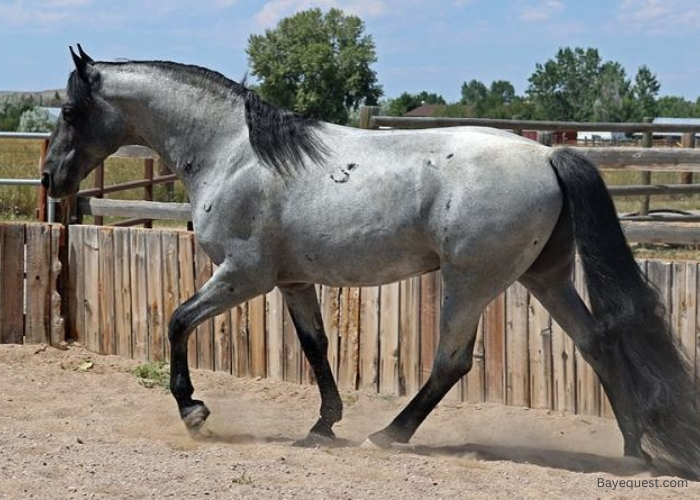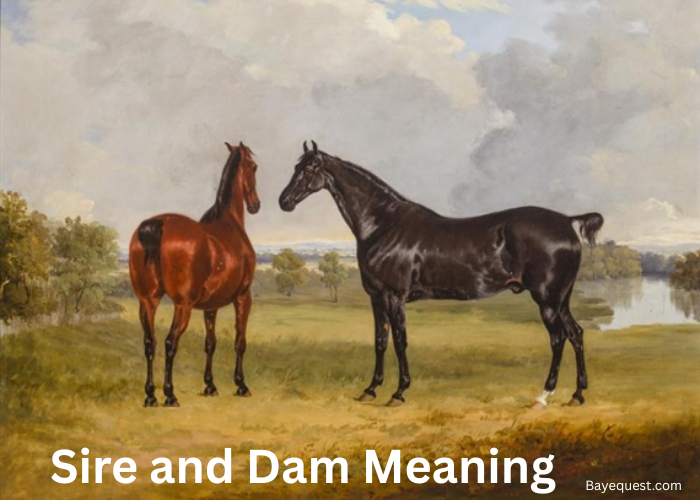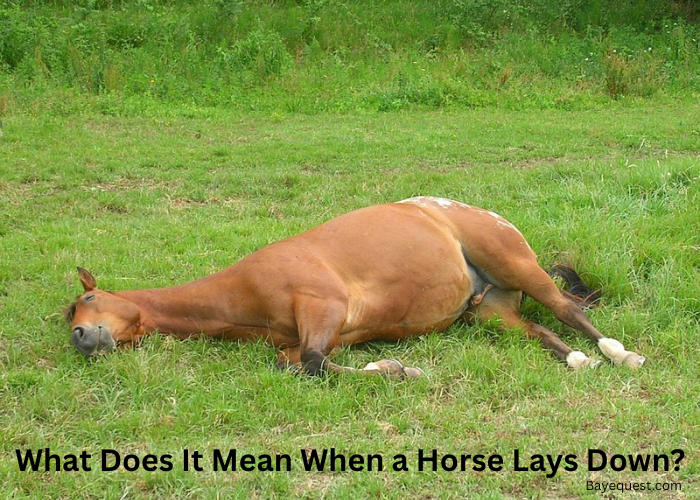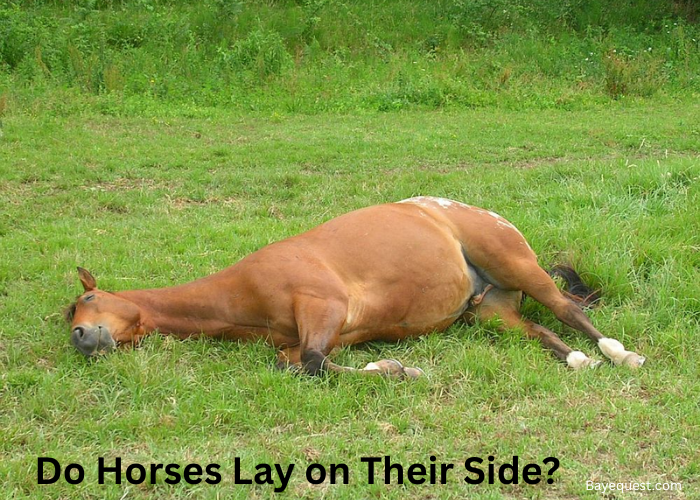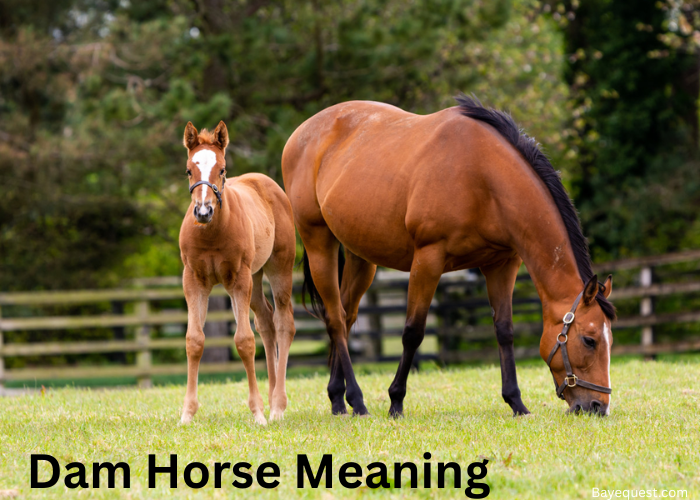Some horses bounce, but gaited ones glide like silk over sand. That cloud-like ride you’ve heard about is real, and it belongs to gaited horses.
These breeds carry you in smooth, even steps that feel more like dancing than riding. The ride is smooth and steady, with a natural rhythm that makes even the longest trails feel easy and light.
They’re the secret weapon of riders who value comfort without giving up style. From the tölt to the running walk, each gait is a treat.
In this blog, we’ll uncover the most beloved gaited breeds, and what makes their ride so unforgettable.
Gaited Horse Breeds: Key Takeaway
- Icelandic horse
- Tennessee Walking Horse
- American Saddlebred
- Paso Fino
- Missouri Fox Trotter
- Rocky Mountain Horse
- Marwari horse
- Peruvian paso
- Spotted Saddle Horse
- Standardbred
- Kentucky Mountain Saddle Horse
- Florida Cracker Horse
- Morgan horse
- Racking horse
- Walkaloosa horses
- Appaloosa
- Campolina
- Mangalarga Marchador
- Mongolian horse
What Makes a Horse Gaited?
A gaited horse is born with a natural ability to perform smooth, four-beat movements beyond the typical walk, trot, and canter.
These extra gaits come from a genetic trait that allows them to move their legs in unique patterns, creating less bounce for the rider.
Instead of trotting with a bumpy two-beat rhythm, gaited horses use gaits like the running walk, rack, or fox trot.
These are all four-beat gaits, meaning each hoof hits the ground separately in a smooth, even rhythm.
Some breeds are fully gaited, while others might carry the trait but need training to bring it out. Either way, these horses make riding feel like gliding, and that’s what makes them special.
Benefits of Gaited Horses
Riding a gaited horse feels like cruising on cruise control. No jolts, no bouncing, just smooth, effortless motion.
But comfort isn’t the only perk. These horses offer a whole list of benefits that make them a favorite for riders of all kinds.
Let’s break it down.
Smoother rides
Gaited horses move with a gentle, four-beat rhythm. That means less bounce and more comfort, especially over long distances.
Easier on the body
Their natural gaits reduce stress on your joints and back. Great for riders with arthritis, injuries, or just looking to avoid soreness.
Perfect for trail riding
They cover ground effortlessly and stay comfortable even on rough terrain. You’ll go farther without feeling worn out.
Great for beginners
The smooth ride helps boost rider confidence. No jarring trot to master. Just sit back and enjoy.
Unique and stylish movement
Their elegant gaits catch the eye. Whether in shows or on trails, gaited horses move with pride.
Calm and steady temperament
Many gaited breeds are known for their even temper. That makes them a popular choice for families and senior riders.
Origin of Gaited Horses
The history of gaited horses goes back thousands of years. One of the earliest known gaited horses was the Narragansett Pacer, developed in the 1600s in Rhode Island, USA.
It was a mix of English and Spanish breeds and became famous for its smooth ride. Sadly, it’s now extinct, but it helped pass on gaited traits to later American breeds.
The Paso Fino traces back to Spanish conquistadors in the 1500s, who brought Andalusians and other Iberian horses to the Caribbean and Latin America.
In Peru, the Peruvian Paso was developed from similar stock. These horses were bred to cover long distances in comfort.
In Iceland, the Icelandic horse has been gaited since settlers arrived around 874 AD. Isolation helped preserve their five gaits, including the famous tölt.
The gaited gene (DMRT3) likely appeared naturally, but it was preserved through selective breeding in regions where smooth riding was essential.
19 Popular Gaited Horse Breeds
Here are 19 popular types of gaited horses that define effortless riding.
1. Icelandic horse
The Icelandic horse is small but strong. It has existed since 874 AD, when Norse settlers brought horses to Iceland.
These horses have remained pure for over a thousand years. One thing that makes them special is their unique gaits.
Besides walk, trot, and canter, they can perform the tölt and flying pace. The tölt is a smooth, four-beat gait with no bounce.
Riders can even hold a drink without spilling. The flying pace is fast and exciting, used in races.
Icelandic horses are sure-footed, calm, and fun to ride. They’re one of the world’s most unique gaited breeds.
2. Tennessee Walking Horse
The Tennessee Walking Horse is one of the most famous gaited breeds. It was developed in the late 1800s in Tennessee, USA.
Breeders crossed Narragansett Pacers, Standardbreds, Morgans, and Saddlebreds to create a smooth-riding horse for farms and travel.
This horse is best for running and walking. It’s a four-beat gait that’s fast, smooth, and easy to ride. The horse glides forward with a unique head-nodding motion.
Tennessee Walkers are calm, friendly, and great for beginners. They’re popular for trail riding and shows.
If you want comfort, stamina, and elegance, this breed ticks all the boxes.
Read also: History of the Tennessee Walking Horse.
3. American Saddlebred
Known as the “peacock of the show ring,” the American Saddlebred brings flash and flair. It was developed in Kentucky in the 1800s for riding and war.
Some are five-gaited, meaning they perform two extra gaits: the slow gait and the rack. These moves are fast, smooth, and stylish.
Saddlebreds are graceful, high-headed, and full of personality. They shine in parades, shows, and even movies.
Riders love their energy and elegance. Whether you want drama in the ring or a smooth ride down the road, this breed delivers with style.
4. Paso Fino
The Paso Fino is smooth, refined, and born to impress. Its name means “fine step” in Spanish.
Brought to the Caribbean by Spanish conquistadors in the 1500s, this breed was developed in Puerto Rico and Colombia.
It performs a four-beat lateral gait that looks fancy but feels like floating. There are three speeds: Classic Fino, Paso Corto, and Paso Largo.
All are smooth enough to ride with a full glass of water, without spilling. Paso Finos are elegant, compact, and full of spirit.
They’re ideal for riders who want comfort with a side of flair.
5. Missouri Fox Trotter
Built for rugged trails, the Missouri Fox Trotter is a true American workhorse. It was developed in the Ozark Mountains during the 1800s.
Its signature fox trot gait is a four-beat diagonal movement, smooth in the saddle and steady on rough ground.
Front legs glide while the back legs shuffle, keeping the rider calm and balanced. These horses are known for stamina, sure footing, and easy temperaments.
They’re a favorite for trail riders, ranchers, and forest patrols. If you need a horse that can go all day without jarring your spine, this one’s a winner.
6. Rocky Mountain Horse
Don’t let the name fool you, this breed hails from Kentucky, not Colorado. The Rocky Mountain Horse was developed in the early 1900s for mountain work and daily riding.
It’s known for its natural single-foot gait, a smooth four-beat movement that’s easy on the rider. With their chocolate coats and flaxen manes, they’re stunning to look at.
But they’re also practical, gentle, sure-footed, and tough. They handle hills, rocks, and miles like pros.
Riders love their calm nature and silky ride. Whether you’re crossing streams or cruising trails, this horse glides with grace.
7. Marwari horse
The Marwari horse is a symbol of royalty in India. With its inward-curving ears and proud posture, it’s hard to miss.
Developed centuries ago in the Marwar region of Rajasthan, it was bred for war, endurance, and beauty. Some Marwaris display a natural ambling gait known as rehwal or revaal, making the ride smooth.
These horses are brave, alert, and deeply loyal to their riders. They’re used in parades, weddings, and traditional ceremonies.
Riding one feels like stepping into history, with a touch of exotic flair and a whole lot of heart.
8. Peruvian Paso
If you want the Rolls-Royce of riding horses, meet the Peruvian Paso. Developed in Peru from Spanish bloodlines, it has an ultra-smooth paso llano gait.
This four-beat movement is so steady you could sip coffee while trotting. The breed also performs the faster sobreandando gait.
What makes the Peruvian Paso stand out is its natural style, called termino, a graceful swinging of the front legs.
These horses are proud, smooth, and a joy to ride for hours. They’re bred for luxury in motion and known as one of the smoothest horses on Earth.
9. Spotted Saddle Horse
Want color and comfort? The Spotted Saddle Horse offers both.
Developed in the Southern United States, this breed combines flashy pinto patterns with a naturally smooth gait.
It mixes gaited breeds like the Tennessee Walking Horse and gaited Spanish types. These horses perform a gentle saddle gait, perfect for long trail rides.
Riders love their easy nature, eye-catching looks, and buttery-smooth movement. They’re versatile, excelling in shows, parades, and pleasure riding.
If you want a horse that turns heads while treating your back kindly, this one’s got it all.
10. Standardbred
Best known for harness racing, the Standardbred also has gaited lines. Developed in the United States in the 19th century, this breed can either trot or pace.
Pacing Standardbreds use a two-beat lateral gait that’s fast and smooth in a cart, and sometimes under saddle. While not all Standardbreds are gaited under saddle, those offer a ride with less bounce.
They’re hardworking, tough, and easy to retrain off the track. Many ex-racers go on to become calm, reliable trail horses.
If you like speed with a side of smooth, this underrated breed might surprise you.
11. Kentucky Mountain Saddle Horse
This horse was born in the hills of Eastern Kentucky. It’s strong, calm, and smooth to ride. Its signature gait is the four-beat amble, also called the single-foot.
Riders love how steady and gentle it feels, even on steep trails. These horses are known for their golden coats and kind eyes.
They’re friendly, easy to train, and sure-footed on rough terrain. They are also perfect for beginners, seniors, or anyone who wants a peaceful ride.
With grace and grit, this breed is built for long days in the saddle with zero back pain.
12. Florida Cracker Horse
Small, quick, and tough, this horse is a piece of living history. The Florida Cracker Horse comes from Spanish stock brought to Florida in the 1500s.
The early men called “Crackers” used it to herd cows through swamps and bushes.
These horses have a smooth and efficient natural running walk. They’re light on their feet, smart, and fast.
Though not flashy, they’re incredibly useful and loyal. The breed nearly disappeared but has made a comeback.
Today, they’re prized for trail riding, working cattle, and keeping a bit of old Florida alive.
13. Morgan horse
The Morgan is America’s first official horse breed, tracing back to a single stallion named Figure in the late 1700s.
While not all Morgans are gaited, some carry a natural ambling gait. These horses are compact, powerful, and full of heart.
They shine in everything from trail riding to dressage. Gaited Morgans offer the best of both worlds, that is, classic beauty and a smooth ride.
They’re known for their friendly nature, strong work ethic, and elegant movement. Whether in the ring or on a trail, a Morgan can carry you in style.
14. Racking horse
If you want speed without the bounce, meet the Racking Horse. Developed in the southern U.S., it performs a smooth, four-beat gait called the rack.
It’s fast, flowing, and feels like gliding. These horses are related to the Tennessee Walker but have their own sleek style.
Racking Horses are easy to handle, making them perfect for beginners and pleasure riders.
They’re also eye-catching in shows with high-stepping action. Calm, smart, and stylish, this breed turns every ride into a smooth cruise.
15. Walkaloosa horses
The Walkaloosa is the best of both worlds: color and comfort. It’s a cross between gaited breeds like the Tennessee Walker and the colorful Appaloosa.
The result? A horse with a unique coat pattern and a natural four-beat gait. These horses are smooth, fun, and striking to look at.
They’re used for trail riding, pleasure riding, and shows. Not every Walkaloosa gaits naturally, but many do with ease.
If you want a smooth ride with a wild, spotted twist, this horse might be your perfect match.
16. Appaloosa
The Appaloosa is famous for its spotted coat and strong connection to the Nez Perce tribe. While not traditionally gaited, some lines show natural ambling gaits, especially when crossed with gaited breeds.
These horses are versatile, smart, and full of personality. You’ll see them in rodeos, trail rides, and jumping events.
Though not as smooth as a Tennessee Walker, a gaited Appaloosa offers style with comfort.
If you’re looking for a dependable all-rounder with a splash of attitude and color, this breed delivers.
17. Campolina
This is one of Brazil’s national treasures. It was developed in the late 1800s and is known for its size, strength, and smooth ride.
The breed performs the marcha gait, a four-beat movement that makes long rides easy.
These horses are tall, elegant, and often have a convex or “Roman” nose. Campolinas are used for ranch work, leisure riding, and parades.
They’re also steady, stylish, and bred for comfort. Think of them as Brazil’s luxury SUV—strong on hills, soft on the spine.
18. Mangalarga Marchador
The Mangalarga Marchador is Brazil’s most popular horse breed, and for a good reason. It was developed in the 19th century.
It’s known for two smooth gaits: the marcha batida and marcha picada. Both are four-beat and keep riders balanced and relaxed.
These horses are athletic, graceful, and very willing to please. They’re used for ranch work, sports, and family riding.
With their strong build and gentle ride, they’re great for riders who spend hours in the saddle. Add their exotic flair, and you’ve got a breed that’s as fun to ride as it is to watch.
19. Mongolian horse
The Mongolian Horse is a warrior’s ride. Tough, fearless, and built to survive. These ancient horses have been roaming the steppes of Mongolia for thousands of years.
Though small, they’re strong and incredibly hardy. Many Mongolian horses have natural ambling gaits, developed from centuries of nomadic travel.
Riders cover long distances daily, often at a gait that’s fast and smooth. These horses live in harsh climates and thrive with little care.
If you want a taste of ancient endurance and no-nonsense travel, this is the original rough rider’s dream.
Benefits of Riding a Gaited Horse
Riding a gaited horse is so much fun and such a game-changer. These horses move differently, giving you a smoother, softer ride that feels like floating.
Whether on trails, in the arena, or just out for a relaxing ride, gaited breeds make every step easier on your body.
Let’s look at why riders everywhere are making the switch.
1. Ultra-smooth ride. Gaited horses move in a four-beat rhythm that reduces bounce. It feels more like gliding than trotting. That means less soreness for your back, hips, and knees.
2. Perfect for long trails. You can ride for hours without getting tired. These horses are built for distance and comfort, making them ideal trail companions.
3. Great for all ages. Whether you’re a child, senior, or beginner, gaited horses offer a gentle and easy experience. No rough jolts—just steady steps.
4. Easy on the horse, too. Their natural gaits are efficient and low-impact, so it’s easier on their joints as well.
5. Confident and calm. Many gaited breeds are calm and people-friendly. They’re less likely to spook, making rides safer and more enjoyable.
6. Stylish and unique. Gaited horses often have a proud, elegant way of moving. It turns heads and feels just as good as it looks.
Can You Ride a Gaited Horse?
Yes, you can ride a gaited horse just like any other horse. The difference is in the comfort.
Gaited horses have natural, smooth movements that make riding easier on your body. You don’t need special skills to get started.
Many beginners prefer them because there’s less bouncing and less strain on your joints.
Whether trail riding, pleasure riding, or just learning, a gaited horse can be a great choice.
They’re calm, steady, and easy to handle. If you want a horse that’s gentle, smooth, and fun to ride, this is it.
Common Myths About Gaited Breeds of Horses
Gaited horses can’t gallop.
Fact- Gaited horses can gallop just like any other breed. They simply offer extra gait options that are smoother for the rider.
They’re only good for trails.
Fact – While they excel on trails, gaited horses can compete in shows, parades, endurance rides, and even dressage.
Gaited breeds are always high-strung.
Fact – Many are calm, friendly, and perfect for beginners. Breeds like the Tennessee Walker and Rocky Mountain Horse are known for their gentle nature.
All gaited horses are the same.
Fact – Each gaited breed has its own unique style, gaits, and personality. From the flashy rack to the smooth tölt, no two are alike.
You need special training to ride one.
Fact – Gaited horses are often easier to ride. You sit back and enjoy the glide—no fancy techniques required.
Breeds of Gaited Horses: Conclusion
Gaited horses offer something special: comfort, style, and a ride that’s smooth as silk. Whether you’re new to riding or have years of experience, these breeds make every ride easier on your body and more fun overall.
From mountain trails to show rings, gaited horses shine gracefully and powerfully. They’re gentle, hardworking, and full of personality.
If you’re looking for a horse that feels good to ride and stands out from the crowd, a gaited breed might be your perfect match.
Try one, and you might never go back.
If you’d love to get more information regarding the genetics, characteristics, and deeper history of gaited horses, check out our comprehensive guide on “characteristics of gaited horses”.



